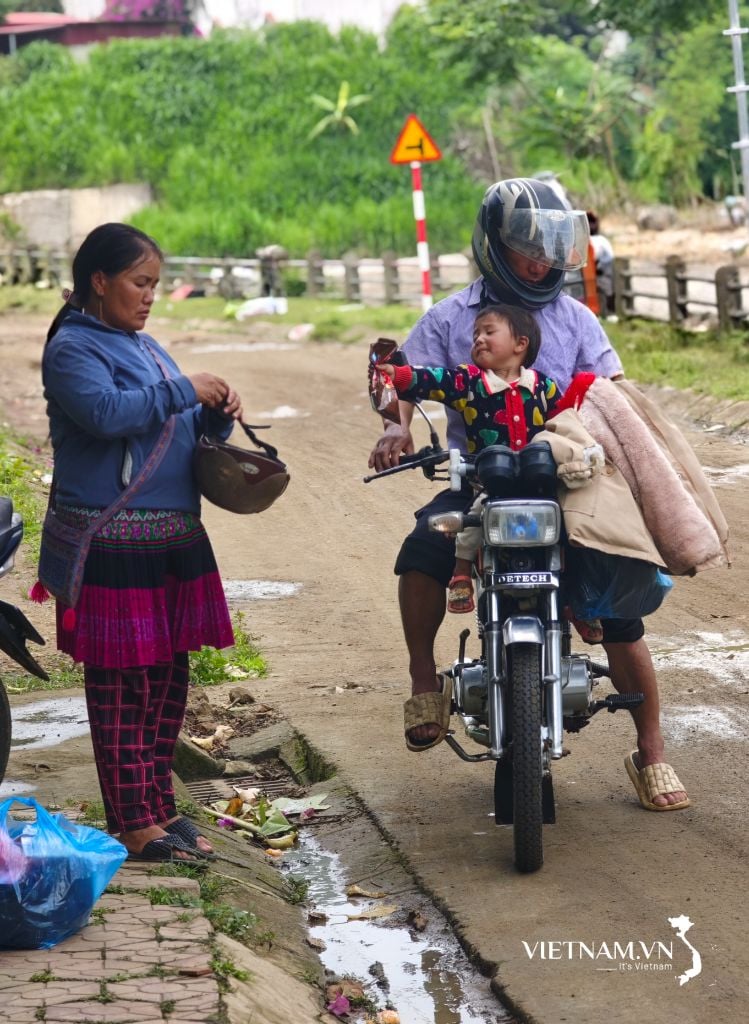Child labor is a reality in many countries, including Vietnam. According to the latest data, the rate of child labor in Vietnam has decreased to 3.5%, equivalent to about 3-4 children out of 100 children (down 5.6 percentage points compared to 2018). This is a remarkable achievement in Vietnam's efforts to promote economic growth and reduce poverty.
However, there are still about 1.75 million children aged 12-17, mainly in rural areas, who are working. Most of the working children are not currently attending school, with about 403.2 thousand children.
What is worrying is that nationwide, 94.3 thousand children (accounting for 35% of the total number of child laborers) have to do jobs that can be harmful to themselves. In Quang Tri , although there are no specific statistics, the situation of children working freely in indirect or direct forms still exists. Many children have to help their parents with farming, selling goods on the street, working in restaurants and eateries with meager wages.
Regarding this content, recently, Quang Tri Newspaper published an article reflecting the story of a teacher at a high school in Dong Ha City. At the year-end parent meeting, he raised the issue that many students in his class had low academic results due to spending time working part-time jobs.
The reason for this situation, according to teachers, is because the economic conditions of the students' families are still difficult, leading to students wanting to have extra income to help their parents pay for their studies.
This is also the first and most obvious reason when talking about the causes of child labor. In low-income families, especially in rural areas and ethnic minority areas, parents consider it normal for their children to participate in labor.
But in many cases, the choice to work part-time is not due to economic conditions but due to the parents' perspective to help their children "grow up", the following story is an example. Around the middle of the second semester, when the high school graduation exam was approaching, Truong T. - a 12th grade student of a high school in Dong Ha City was still working hard at a fast food restaurant.
The purpose of this short-term part-time job, for T., is just to earn enough money to go out with friends after the exam. As for his parents, they think this is an experience so they do not interfere with their child's part-time job.
The International Labor Organization defines child labor as “work that deprives children of their childhood, potential and dignity, and is harmful to their physical and mental development.” Physically, children are vulnerable to accidents and injuries due to overwork.
Mentally, they live in anxiety, inferiority complex, and are even drawn into a social environment. But more seriously, if they focus too much on part-time jobs, they will lose the opportunity to study and develop comprehensively - which should be a top priority for students.
The deprivation or restriction of the right to education leads to a vicious cycle of poverty that repeats itself over generations. A civilized society cannot be built on the feet of young people who have to struggle to make a living early.
The World Day against Child Labour was established to promote awareness and action to prevent and eliminate all forms of child labour worldwide. Recognising this important significance, in recent years, Vietnam has completed the legal framework and implemented solutions to protect children in many areas, including child labour.
In order to realize the goal of eliminating child labor, Vietnam has developed a roadmap to gradually reduce the rate of child labor, aiming for less than 9% by 2020, less than 8% by 2025 and less than 7% by 2030. However, achieving this goal is not easy. Child labor still exists, of which 15% of children are forced to work illegally.
And somewhere there are still many hidden corners, many young lives are being pushed into the vortex of making a living too early. Therefore, to achieve the above goal requires continuous and long-term efforts from many sides, including the Government, ministries, departments, sectors, communities, and families.
It is necessary to strengthen propaganda to change social awareness of child labor and support livelihoods for families in difficult circumstances so that their children do not have to work to earn money while still at school age. In this process, it is necessary to mobilize the active participation and effective coordination of socio-political organizations and socio-professional organizations to promote efforts to eliminate child labor in all forms.
On the family side, parents are the ones who know better than anyone else what their children should and should not do. And they are the ones who supervise their children most closely, giving them a proper childhood.
Therefore, along with livelihood support, strengthening initiatives on parenting skills and community education should be emphasized to equip them with the necessary knowledge to change the way families and society view child labor.
Hoai Nam
Source: https://baoquangtri.vn/tang-toc-hanh-dong-de-cham-dut-lao-dong-tre-em-194308.htm


































































































Comment (0)